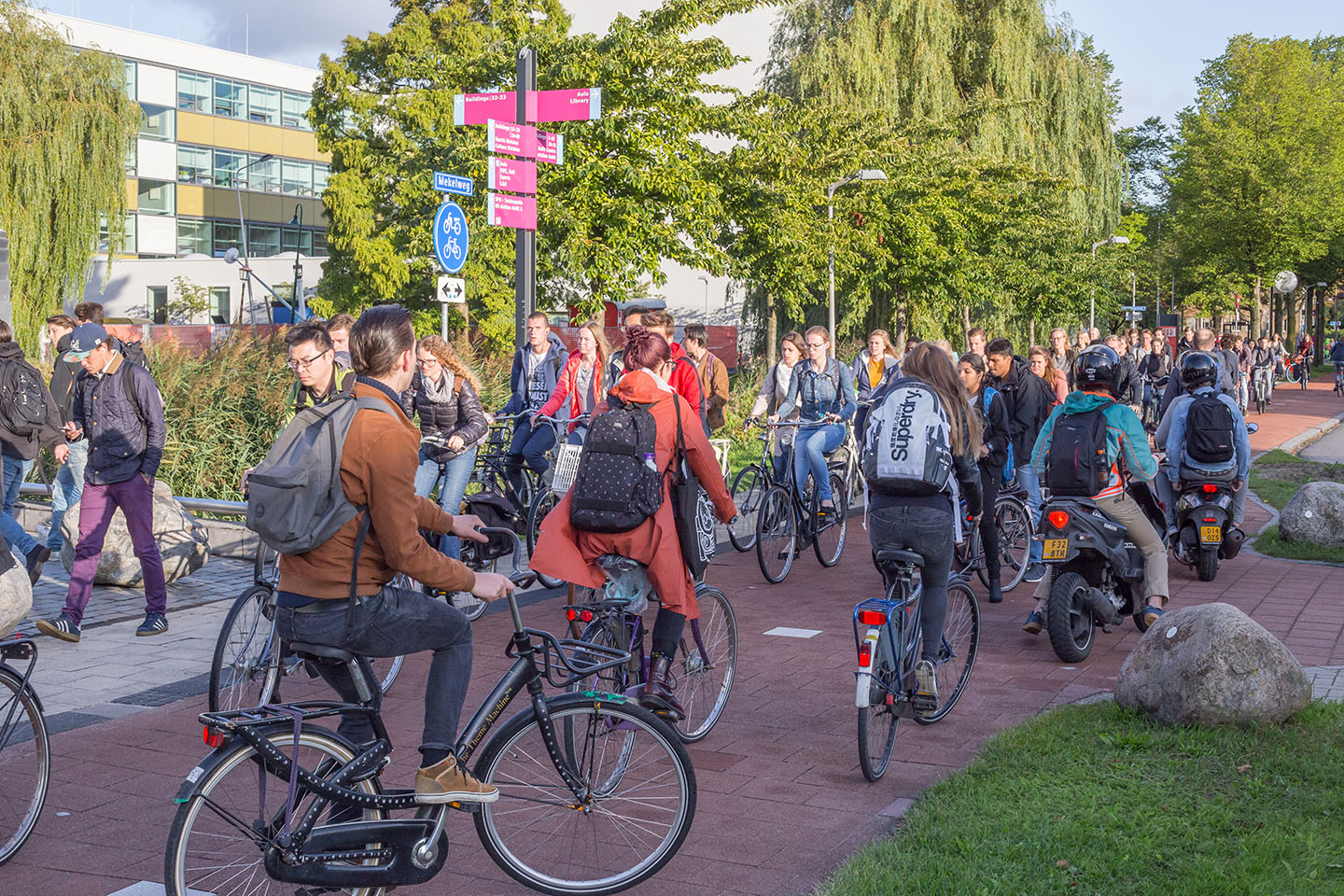Everyone uses a bike to get around in the Netherlands. It’s a way of life. Whilst you may not see the rules strictly adhered to in practice, it might be a good idea to know what they are.
Dit jaar kwamen er meer eerstejaars bachelorstudenten dan verwacht. (Foto: Thomas Zwart)
Legal protection
Cyclists are protected by a strict liability law. The car is deemed responsible in any collision between a cyclist and a car, regardless of fault. Even if a driver can prove the crash occurred because of a cyclist’s wrongdoing, the motorist’s insurance company is still responsible for at least 50% of the damage to the bike and its rider, 100% if the cyclist is a child.
Lights and reflectors
Lights and reflectors are compulsory on your bike at night, or when visibility is restricted. Reflectors are red at the rear, yellow on the pedals, and white or yellow on the wheels. Front lights are white or yellow, and rear lights are red. Lights don’t have to be fixed to the bike, they could be attached to your chest or back, so long as they’re visible. According to Fietsersbond, the Dutch Cyclists’ Union: “It only costs a few euros, but investing in a good set of bike lights is worth your while. You’ll be seen better by cars and cyclists.” In addition to an accident, you also risk a fine if you don’t comply: €55,- for no lights, and €35,- for no reflectors.
A bell
Every bike should have a bell that can be heard by other road users. It’s much easier to pass other traffic on narrow or busy roads with your bell, so don’t be afraid to use it. The fine for a faulty bell is €35,-.
Alcohol and drugs
Cycling whilst under the influence of drink or drugs is not allowed. The alcohol in your breath must not exceed 220 micrograms per litre. That’s a blood alcohol content of 0.05%. Is this the same for all road users? “Yes, for you as a cyclist, the same standards apply as for motorists,” according to the police website. The public prosecution website details the penalties: “For cycling under the influence, the penalty amount is €100,-. Cycling under the influence in combination with dangerous cycling behaviour is punished more severely.” So a taxi is cheaper than the fine if you’re considering cycling home after a heavy night.
Priority to the right
The general rule at road junctions is that priority must be given to traffic approaching from the right, and this goes for bikes as well as cars, unless road markings or signs indicate otherwise. For example, shark teeth, the white triangles painted on the ground, point to whoever is supposed to stop and yield.
Indication
It’s compulsory to give advance warning of your intention to turn left or right by stretching your arm out horizontally in the direction you wish to travel. A €35,- fine is possible for failing to do so. And it’s always best to check over your shoulder before turning.
No rules
Cycle helmets are not compulsory. There are no rules saying you can’t cycle whilst using your mobile phone or whilst listening to music. Carrying passengers on the front or back of your bike is fine, so long as children eight or under have a suitable seat. Cycling two abreast is fine, so long as you don’t disturb or hinder other traffic. Cycling three or four in a row is not permissible by law, despite teenagers doing this often. An English language brochure entitled ‘Road Traffic Signs and Regulations in the Netherlands’ can be downloaded from rijksoverheid.nl, a government website. The public prosecution website, om.nl, details in Dutch the penalties for breaching the rules.
Also see our article about the unofficial cycling rules – the kind of tips you won’t find in your guide book.
This is an updated version of a previous Survival Guide article.
Also read: Surviving learning Dutch



Comments are closed.